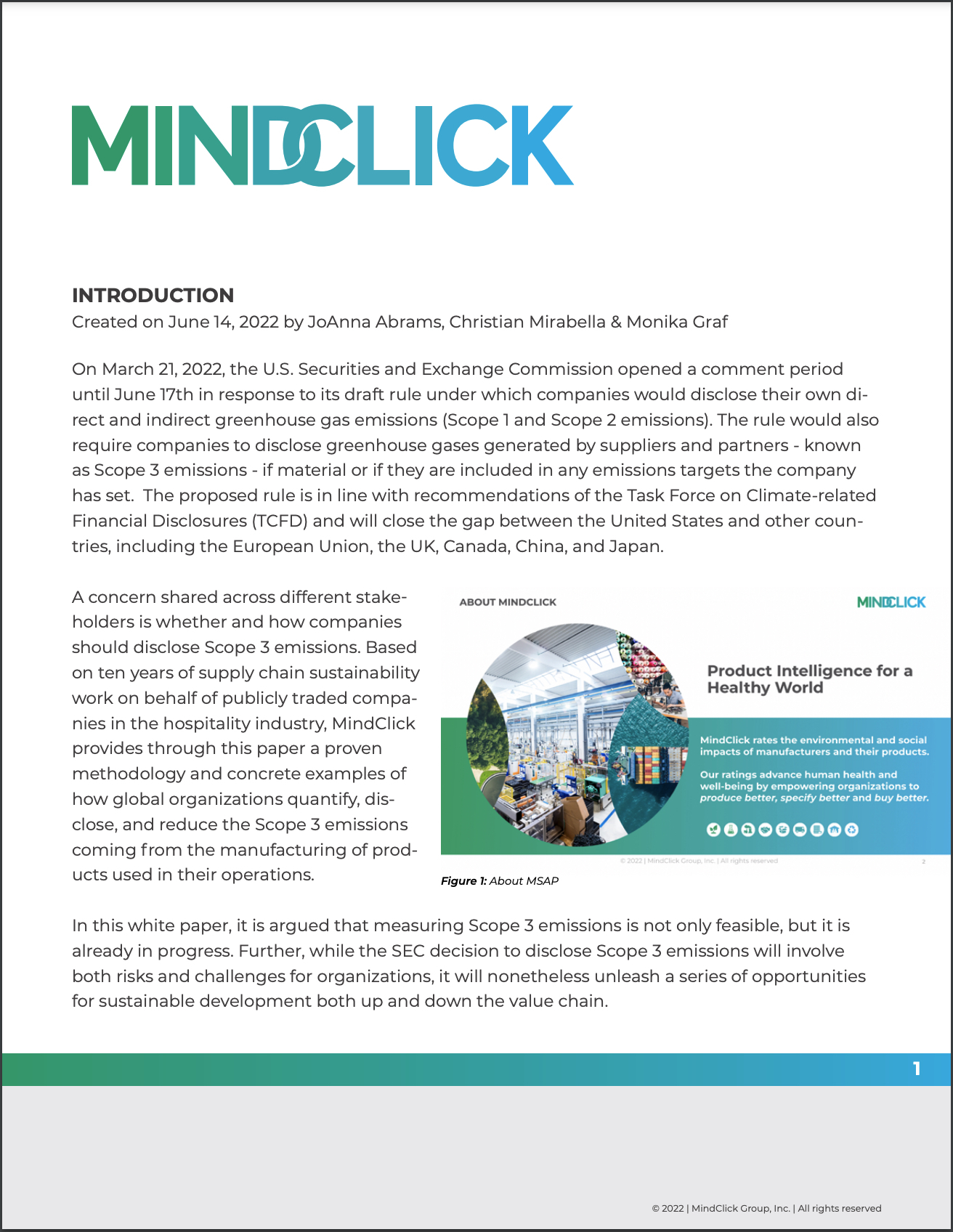
MindClick
MindClick rates the environmental health performance of manufacturers and their products.
The result: product intelligence that drives transparency and innovation across organizations and their supply chains to meet global demand for healthier products and healthier environments.
Introduction
On March 21, 2022, the U.S. Securities and Exchange Commission opened a comment period until June 17th in response to its draft rule under which companies would disclose their own direct and indirect greenhouse gas emissions (Scope 1 and Scope 2 emissions). The rule would also require companies to disclose greenhouse gases generated by suppliers and partners – known as Scope 3 emissions – if material or if they are included in any emissions targets the company has set. The proposed rule is in line with recommendations of the Task Force on Climate-related Financial Disclosures (TCFD) and will close the gap between the United States and other countries, including the European Union, the UK, Canada, China, and Japan.
A concern shared across different stakeholders is whether and how companies should disclose Scope 3 emissions. Based on ten years of supply chain sustainability work on behalf of publicly-traded companies in the hospitality industry, MindClick provides through this paper a proven methodology and concrete examples of how global organizations quantify, disclose, and reduce the Scope 3 emissions coming from the manufacturing of products used in their operations.
In this white paper, it is argued that measuring Scope 3 emissions is not only feasible, but it is already in progress. Further, while the SEC decision to disclose Scope 3 emissions will involve both risks and challenges for organizations, it will nonetheless unleash a series of opportunities for sustainable development both up and down the value chain.
The perceived lack of agreed methodology for calculating Scope 3 emissions, the perceived complexity, the perceived lack of data, and potential exposure to litigation for inaccurate or misleading information are leading companies to resist or modify Scope 3 disclosure requirements. However, it’s worth being reminded that a manufacturer’s Scope 1 and Scope 2 emissions are their customer’s Scope 3 emissions. In the case that the manufacturer themselves is a publicly-traded company, they too will be required to disclose their Scope 1 and Scope 2 emissions, thus making Scope 3 emission data available for their customers.
The paper will document the feasibility of data collection, monitoring, and optimization of Scope 3 emissions derived from MindClick’s experience and accomplishments with hotel brands and operators who select and purchase from manufacturers of Furniture, Fixtures, and Equipment (FF&E) and Architectural Building Products. It is realistic to think that reporting on Scope 3 emissions will become a required practice, so organizations globally should be prepared. The key will be to offer them one clear and standardized reporting framework within which to report.
This white paper was written on June 14, 2022 by JoAnna Abrams, Christian Mirabella & Monika Graf.